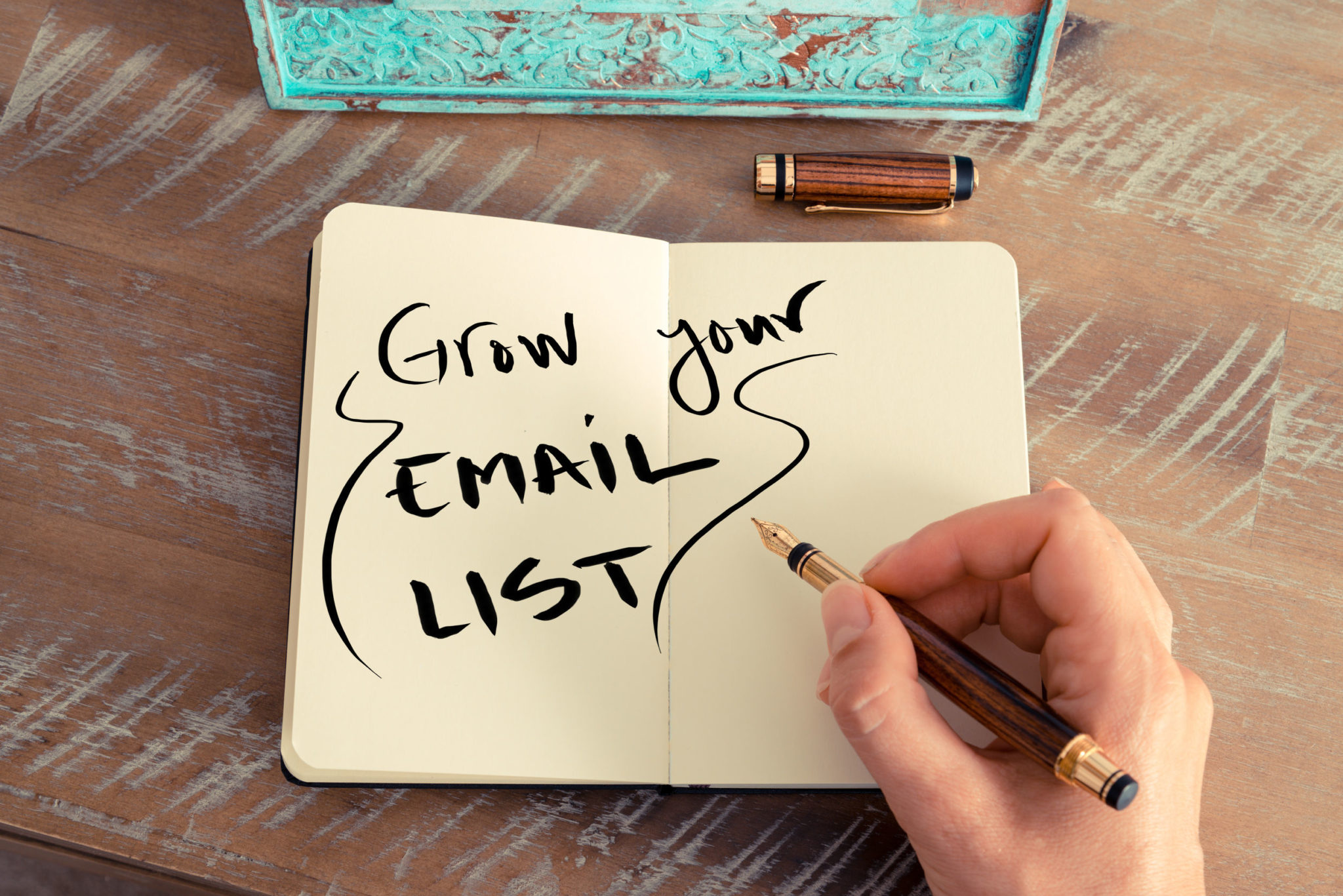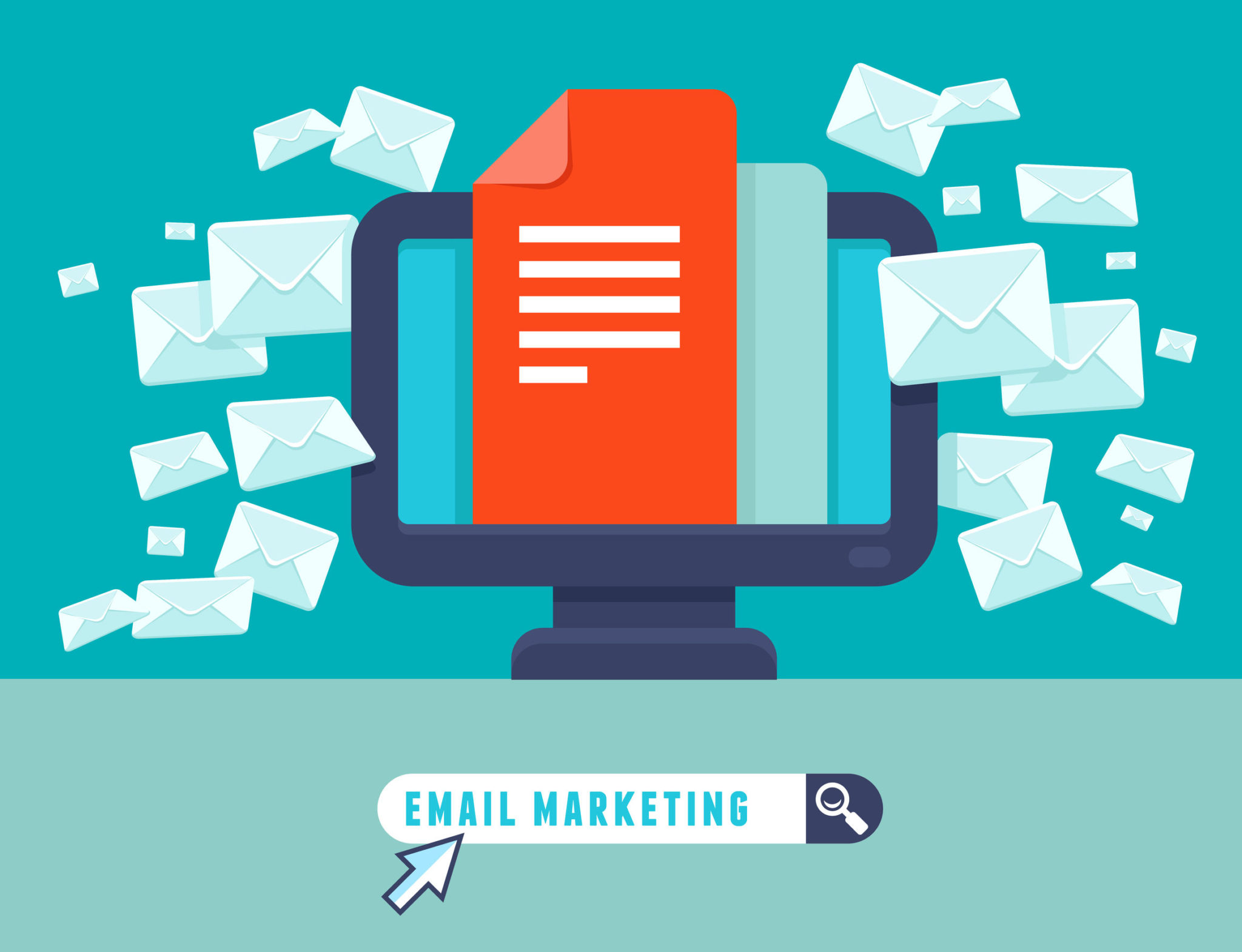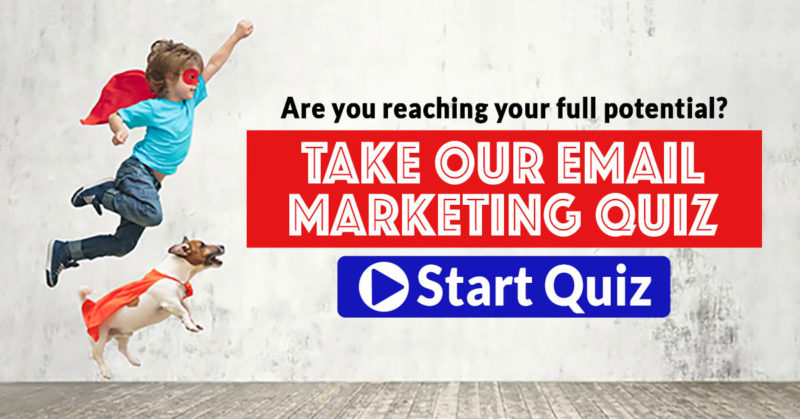Most often the main obstacle to maximum email deliverability to your subscribers’ inboxes has to do with how you go about sending your emails to your list. In this article we go over how to manage your contacts, collecting new leads, and who to target when sending your emails.
But before we get started, we should ask ourselves…
Why Have a List At All?

If you are here reading this article, then you already know the value of building an email list. Simply put, we are in the business of growing revenue, and your email list is your point of reference. Typically, the larger your email list, the more money you make every month.
If we have an online store or another website meant to sell a product or service, Very few people that come to your website will buy something on their first visit. If you want to have a chance to sell to the ones that leave your site, you need a way of communicating with them after they leave.
Building a huge email list, full of your own raving fans that want to hear from you, gives you that chance to make that first sale. More importantly, it will also let you serve them at a much higher level through higher-ticket sales of your products and services by building a solid relationship with your subscribers over time.
Why the Quality of Your List Matters

Generally, email service providers charge you a monthly fee based on the size of your subscriber list. You want to be sure that since you’re paying to deliver your emails to your list, that you only pay to deliver your message to people that actually want to hear from you.
3 Questions to Consider About Your Relationship with Your Subscribers

1. How did the relationship start?
In other words, how did you get your subscribers on your list to start with?
Did you find them through a purchased list or a sweepstakes (which bring in low-quality leads)?
OR…
Did you bring them into your list by providing value in exchange for their email address (using tools such as landing pages, timed popups, exit intent popups, etc.) meaning that they actively raised their hands to say they want to hear more from you?
2. How was the relationship maintained?
Did you email your list consistently with valuable content?
Email lists are powerful for building your business, but because of all the competing noise in your subscribers’ inboxes (not to mention everywhere else on the internet) your subscribers will forget about you very easily if you don’t send something to their inbox at least once a week.
It’s not uncommon to not send an email for just 2 weeks and have your click-through rates get cut in half. Unfortunately, the old adage “out of sight, out of mind” is especially true online.
3. How did the relationship end?
If the relationship was ended, did the former subscriber just unsubscribe, or did they report your messages as spam?
It stinks when someone unsubscribes from your email list, but when someone reports your messages as spam, that can do some damage to your deliverability rates.
How you treat your subscribers while they’re your subscribers can have an impact on how they leave if they decide to do so. In short, keep sending relevant, helpful content to your subscribers.
However, there are people who genuinely don’t know how to unsubscribe from your list and will simply report you as spam just to unsubscribe, not knowing the damage they’re doing. Sometimes this is unavoidable. Again, all you can do is treat your subscribers well while you have them.
There are two schools of thought when it comes to dealing with unopened emails:

1. Blast and Decay – “If they haven’t opened, they haven’t seen it. Resend, resend, resend!”
The process for this method is as follows:
- Put anyone you can on the list
- Send as many emails as possible
This is terrible for a number of reasons.
For starters, sending your emails to people who haven’t explicitly opted in to receive your content, you will eventually be blocked by every ISP worth their salt and whatever work you did will be for nothing. On top of this, since you sent these emails that were unsolicited, the recipient of these emails will happily mark your messages as spam, which makes the inevitable happen even faster.
Second, even when people opt in to subscribe to your content, sending too many emails can lead to email fatigue. It’s good to want to be in front of your audience, but if you overdo it you will get treated like background noise and eventually get tuned out by your audience.
This is school of thought values short-term gains at the cost of long-term stability. This is a surefire way to ensure that your emails get dropped in the spam folder with a quickness.
2. Nurture and Grow – “Have we earned the right to send this email? Is this content relevant and interesting?”
The process for this method is as follows:
- Put only opt-ins on the list
- Send as few, accurately targeted emails as possible
This method may take longer to build your list, but when you build your list this way you are building a solid foundation for the long haul.
Also, a good pace for sending emails is roughly 5-7 emails spread over 2 weeks, particularly for nurture and welcome series.
This is the school of thought you should go with to ensure your subscribers actually get your messages when you send them when you get them, and to keep your reputation intact when you do get them onto your list.
Defining “Engaged”
A subscriber’s engagement mainly relies on these three variables:
1. How recently did you send your latest email? This will greatly affect engagement.

You should send an email to your list at a bare minimum of once every 30 days or less, preferably 7 days. The longer it has been since you sent your last email, the less likely they’ll respond to your email. Wait too long and your subscriber engagement numbers will look like they fell off a cliff.
2. What Positive Signals do your subscribers give when you send your emails to them?

Meaning, do they respond to your email? Do they open your emails? Do they click through to the page you linked to in your emails?
3. What Negative Signals do your subscribers give?

Do your subscribers mark your emails as spam? Are your subscribers consistently not opening your emails?
Here Are Some Simple Rules of Thumb to Follow for Your “Every Day” Marketing List
- Make sure your main marketing list is full of subscribers that have opened your emails in the last 60 days OR have opted in to your list in the last 14 days.
- Make sure they are actively engaged, meaning they open more than 33% of your emails.
How to Grow Your Subscriber List

We touched on these briefly, but they’re worth discussing in more detail.
The strategies you want to focus on are:
- Timed or scroll pop-ups
- “Special” lists (ie. sneak peeks)
- Exit intent popups
These strategies mostly involve targeting people that are already interested in what you’re talking about and would like to learn more. These methods are excellent for building a list packed with exceptional quality leads.
Avoid these strategies at all costs:
- Buying or swapping lists
- Sweepstakes
- Conversion wheels
These list-building methods have a horrible reputation of filling your email list with the lowest-quality leads imaginable. To keep from paying your email service provider inflated prices for bad leads, avoid these list-building methods at all costs.
NOTE: There is one exception to the “swapping lists” strategy: JV partnerships.
JV (Joint Venture) partnerships are where there is an explicit agreement to promote to each other’s list. In a correctly-executed JV partnership, subscribers from both lists would benefit from the promoted partnership (as long as the cross-promoted content is relevant to that audience.)
How to Prune Your List

As we have covered earlier, the lower the percentage you have of people opening your emails, the more of a negative impact it has on your email deliverability over time. Because of this, you want to cut the dead weight from your subscriber list early and often.
Cleaning Your List in 4 Simple Steps
- Decide which of your lists is your primary subscriber list.
- Figure out the quality of that list (how many of them are opening your emails and clicking the link inside the email).
- Segment your most engaged subscribers.
- Segment your unengaged subscribers and suppress and/or remove them from your list.
Qualify and Segment Your Most Engaged Subscribers
Check your subscribers and see if they:
- Have been added in the last 14 days OR…
- Have opened an email in the last 60 days
- Are not already in a suppressed segment
Suppress Your Unengaged Contacts
Take a look at your subscribers and see if they:
- Have received at least 1 email in the last year
- Have not opened an email in the last 6 months
- Are not suppressed already
Once you finish adding your unengaged subscribers, export this list, then upload the CSV to your Suppressed Profiles list
Best Practices for Building Quality Subscriber Lists (and automating list pruning)

1. Set up your email blasts to be sent from your own custom email address.
This simple step accomplishes a number of things for you for one simple reason: A custom email address carries a certain level of professionalism that is absent from free email accounts.
Emails coming from free accounts such as Gmail, Yahoo Mail, Hotmail, etc. will have a much harder time getting through the dreaded spam filter. Using a custom email account increases your reputation in the eyes of internet service providers (ISPs) and your emails will reach your subscribers much more reliably. Having a email huge list doesn’t do you any good if you can’t reach anyone on that list.
It also helps maintain congruence for your brand. Even if you use your brand name in your free email account, it doesn’t carry quite the same weight that it would from a custom business domain. It looks far more professional and far less scammy in the eyes of your new subscriber. As a result, they’ll be much more likely to pull out their credit cards and purchase your products and services.
2. Set up a Welcome Series for the new subscriber.
If they open the Welcome Series emails, they’ve shown you that they’re interested and should go into your regular marketing list. You should email them freely unless they stop opening your emails.
If they don’t open, send to “Unengaged” list and do not email them again unless you’re sending them something big and important.
3. Use an engaged segment for your regular marketing emails.
Use more specific segments for special promotions. Pick out your best subscribers based on their engagement and purchase history.
4. Suppress “stale” profiles at least once every 3 months.
If they haven’t opened one of your email in 90+ days, send them to your “Unengaged” list.
The more people that receive your emails and don’t engage with them in any way, the greater damage it does to your email deliverability.
Use These Strategies to Maximize Your Email Deliverability.
Boosting your email deliverability and avoiding the spam folder can be summed up in 6 key principles:
- Send your emails from a customized business email address.
- Don’t keep repeating your email blasts, unless you want Gmail to place your emails in the spam folder.
- When you are trying to earn more money, focus on growing your subscribers list using methods that allow you to earn a subscriber’s trust (and email address).
- To prevent deliverability issues from the beginning, add engagement criteria to your marketing lists. This will automate your list pruning and ensure you only talk to those on your list who are the most interested in your message.
- Think critically about who you’re sending your emails to, and understand the relationships you have with each segment of your list.
- Always send content that is most relevant to each segment of your email list.
Are you maximizing your email marketing potential for your business? Take this quiz to find out.







Leave A Comment